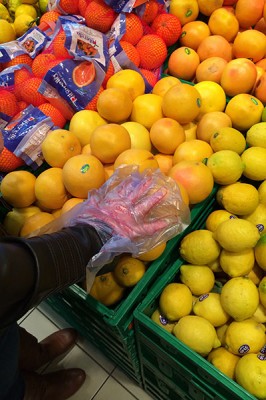I’d like to take a minute (just sit right there, I’ll tell ya how I became the prince of a town called Bel-Aire) to talk about grocery shopping in Italy.
Fair warning. This post is completely mundane.
Because I go to the store almost daily (on account of that whole “I can only buy what I can carry” thing), I have become quite familiar with certain aspects and would like to share them. Just in case someone two years from now, who has roamed the whole grocery store in search of plain old sugar without success, googles “where to find sugar in Italian grocery stores.”
First off, it’s not in the baking aisle. But you know this. You’ve already been down that aisle. Probably twice. Surprise! It’s in the cereal aisle! Next to the cookies. But not the cookie aisle that shares its home with the sweets and dessert cookies. It’s in the breakfast cookie and cereal aisle. Yep. Multiple cookie aisles.
You’re welcome.

But would you like to know what is in the baking aisle? Flour. All kinds of it. All-purpose? Check. Cake/pastry flour? Check. Pasta/Pizza flour? Check (obviously). Chestnut flour? Check. There is even chickpea flour and flour from farro. I am already overwhelmed. I use farina tipo 00, which I assume is close to all-purpose, as it seems to work as I intend. So there’s that.
My favorite thing about the grocery stores is actually something I discovered while shopping on Elba this summer. When it comes to produce, there is no “touching” allowed. They provide plastic gloves and you are supposed to use those to select your product. No grubby hands on fresh produce? I’m down with that.

At stores both here and in France, the customer is also responsible for weighing and tagging their produce. Each item has a number associated with it (next to the price per kilo) and once you’ve bagged whatever produce you’ve selected, you take your bag to the scale, punch in the number from the price tag, then it spits out a bar code sticker with the price on it. If you forget to do this, the cashier gives you dirty looks and makes you go back and fix it.
Unless you’re old.
If you’re old, they do it for you. I don’t think I’ve ever seen a cashier call someone to look something up for them. They get off their chairs (they are usually seated here) and go tag it themselves.
Sidebar: when you’re old, you’ve also apparently earned the right to just give the cashier a handful of change, let them count it out and tell you how much more/less is needed. I love when the old people feign naivety. It cracks me up when they act like they don’t know how to count/don’t understand the total. When it comes my time, you can bet I’m handing over a pile of coins to someone else and letting them do the math.
Speaking of coins, they love theirs here. I feel like I may have mentioned this already, but just in case…the Eurpoeans clearly have a love affair with coin money instead of paper, because they have not only a one-cent piece, but two-cent, a five-cent, a ten-cent, a twenty-cent, a 50-cent, one euro and two euro pieces. They love coins. Paper money doesn’t start until five euros. And as in America, the one-cent (and here, two-cent) pieces are useless. They aren’t a shiny gold color like the others— they are a flat copper color. No vending machines take them, cashiers usually sigh deeply when you give them a handful. No one likes the brown monies.
But back to the grocery stores.
Finally, there are a lot of stores nearby, but each carry a different supply of merchandise. In France, if you found it at one store, it was likely the other stores had it too. This was, in part, because they were all the same family of stores. Here, I’ve found that I really need to be observant to find everything on my list.
For my daily shopping (or if I need quinoa), I go to Pam. It’s your basic corner supermarket, covering the basics, somewhere between a 7-11 and a Safeway. But if I could get them to carry green onions (like other stores here) that would be swell. If I do need green onions, or sour cream for that matter (let’s say I’m making Mexican for dinner; hypothetically, of course), Panorama boasts not only green onions, but also panna acida or, as we know it, sour cream. So far, it’s the only place I have seen it. It was a major shopping win for me. If I need a better selection of cheeses, including real chevre, I go to Carre Four. (Yes, it’s French. But I stand behind my need for real chèvre. What they call “goat cheese” here, while tasty, is not always what I’m going for). Finally, if I’m feeling like making a day of it, I can take the bus to the biggest store of all, Iper conveniently located at the region’s largest mall.
You think I’m joking, but there is a lot of planning that goes into grocery shopping because I’ve been so used to being able to patronize one store, buy everything on my list and that’s that. I suppose it’s partly my California existence. In the Golden State, we are fortunate to enjoy items, typically seasonal in other places, year-round. So I have been spoiled. And it’s made for a strong learning curve in other countries.
But at least I know where the sugar is here.

hahahaha love this!! 😉
9 years later… you just saved my coffee-loving butt. Thank you!